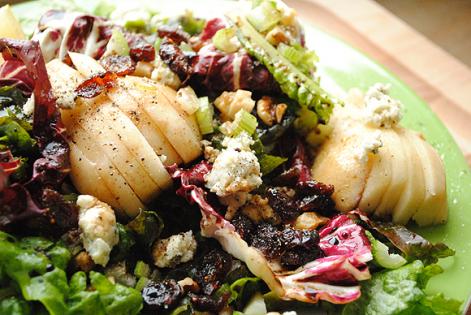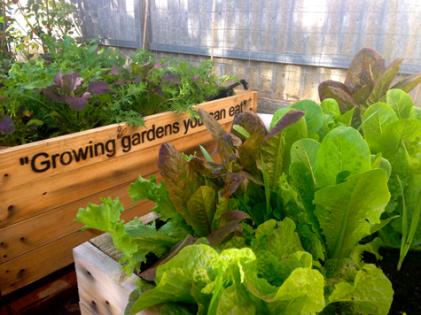So many of us tend to think of lettuce as something to have in summer; and while it’s especially delicious then, there are many varieties around to ensure you’re never bored with it.
The lettuce we see today started out as a weed around the Mediterranean basin. Served in dishes for more than 4,500 years, lettuce has even made its mark in history, with tomb painting in Egypt where scholars have identified different types of lettuces. Christopher Columbus is thought to have introduced lettuce to the new world.
Eating lettuce has many benefits; most greens are a great source of vitamin C as well as vitamin A and other phytochemicals and antioxidants. Some varieties of lettuce even contain calcium, folate, as well as iron and omega-3s.
Here are some of the top lettuce picks.
Arugula (Rocket or Roquette)
It is now one of the most popular types of lettuce. It has small, flat leaves with long stems, and a peppery taste. It is usually paired with other varieties to balance out the taste.
Dandelion Greens
Used for years for medicinal purposes, dandelion greens are packed with inulin which keeps your gastrointestinal tract healthy, by promoting the growth of good bacteria. Look for leaves that are smaller, and slightly curled because they will have a less bitter taste.
Mizuna
Mizuna is one of the mildest mustard greens, and can usually be found in mesclun mixes. It is known to contain powerful glucosinolates, antioxidants linked to decreased cancer risk, Mizuna has been cultivated in Japan for thousands of years and has an exotic, slightly spicy flavour. Shopping tip: look for crisp green leaves that are not wilted.
Mâche
This lettuce is tender with a sweet, nutty flavour and can be sautéed as a side dish. Mâche was brought to Australia France. Mâche is high in folate, fibre, and omega-3s.
Raddicchio
Similar in appearance to red cabbage, radicchio is actually a member of the chicory family. This leaf is typically used for an accent in salads because of its steep cost as most radicchio lettuce comes from Italy.
Watercress
Another member of the mustard family, watercress has small, crisp, dark green leaves and has a pungent, slightly bitter flavour as well as a peppery snap. Smart shopping: choose crisp leaves with deep, vibrant colour. It is also a great source of vitamin K.
Purslane
This lettuce type is considered a weed to many farmers, but packs a huge nutritional punch. It tastes slightly lemony and is juicy and crisp as well as a great source of omega-3s. Store purslane with stems in cold water in the refrigerator to maximise shelf life and freshness.
What is the best way to store lettuce?
Lettuce tends to keep well in plastic bags in the crisper section of the refrigerator. Bagged lettuce and more delicate greens don't last long so purchase only as much as you will use within a day or two. Fresher lettuce contains more vitamins, so eat up!
To help get you inspired, try our Winter Lettuce Salad recipe!
Red Leaf and Radicchio with Pear Salad

Ingredients
1 small head of red leaf lettuce; discard core, clean and torn
1 radicchio; discard core, separate the leaves
2 to 4 pears; peeled, discard core, sliced
1 fennel bulb; diced
½ cup walnuts; toasted and roughly chopped
½ cup cranberries
200g crumbled blue cheese
1 small red onion; thinly sliced
Salt and fresh black pepper
1 lemon; quartered into wedges
Olive oil
Fig or red balsamic vinegar
Method
1. Lightly toss red leaf lettuce and radicchio with a little salt and fresh black pepper in a bowl.
2. Place a handful of salad greens onto a plate. Top with slice pears.
3. Sprinkle fennel, walnuts, cranberries, and blue cheese on top. Add salt and fresh black pepper.
4. Garnish plate with a quarter lemon wedge.
5. Allow guests to squeeze fresh lemon juice and drizzle olive oil and vinegar onto their salads.



















__small.png)










